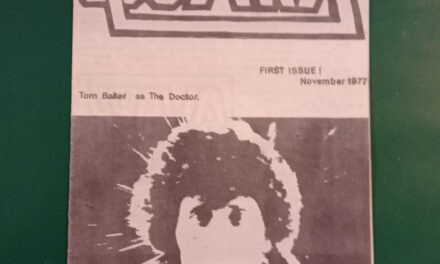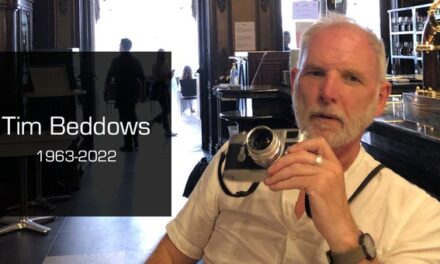At the moment I’m editing a book on Music in Comedy Television. As part of the project I decided to go back to iconic pieces of comedy television I remember having had a musical impact, starting with 80s sitcoms (judge me, go on). I was expecting that some of the bits would have aged badly – comedy often does, particularly as standards for social and political correctness develops. I wasn’t expecting was to discover some soundtracks had been adapted or out and out replaced.
The first change I noticed was in Married With Children. Set up as something of an faux-ideal American family story, the show’s characters, The Bundy family, were petty, generally dislikeable, mostly miserable and rude individually (and collectively). It was a comedy of (ill)manners, set off with its ironic use of an iconic piece of music as its theme, Frank Sinatra’s “Love and Marriage”. The song set up a perfect comedic juxtaposition – sophisticated and idealised in direct contrast to the characters and situation of the show itself. In short- it was funny to have the style and substance of Frankie and the orchestra set up the squaller of The Bundy Family:
With my computer open I returned to the show to start writing, putting my husband’s DVD of the show into the player to start taking notes. However, instead of Frankie playing over the opening credits, the DVD release featured an instrumental sound-a-like for the original (reproduced below by outraged fans YouTube with a picture montage from the show). There was no Sinatra, no orchestra, no lyrics, but instead a bouncy synthesied melody that was as satisfying as a low calorie light beer:
Now you could say this is a small and insignificant change, but for a music scholar, this is a big deal. For a music fan, this is a big deal. For a comedy fan, yep, now you’re getting it. Even though Married With Children is not the finest piece of comedy television ever (far from it!), the point is that the original relationship between music, comedy and television had been deliberately set up to draw in the audience in a specific way – the nostalgic idealism of the Sinatra track over the commercial greed of the 80s bursting bubble. The combination was perfect (even if the rest of the show was problematic!). The replacement soundtrack was a gesture but it didn’t do the same thing in the same way.
It seems Married With Children is not the only re-released television show that’s had its music resynchronised upon DVD or on demand release. A quick search online brought me to several wonderful (and outraged) fan sites documenting the same types of thing. For example, on the fan television blog “All The TV”, regularly contributor “C” (Caroline), wrote about the changes to “Skins” that had been made to get it onto Netflix. Under the heading “A note to those who would watch “Skins” on Netflix instant”, she wrote something of a warning:
“Yes, it’s awesome that it [the full series of Skins] is all up there, but there is a huge difference between the episode that originally aired on TV versus the syndicated one you’re getting on Netflix, and that’s the soundtrack. This normally wouldn’t be a big deal, but British licensing rules are such that shows can use any song they like on their first airing without paying a cent; it’s only when the episodes go into syndication or are released on DVD that paying for songs becomes an issue. When you watch a Skins ep on Netflix, you’re actually watching an episode that had to readjust itself in a pretty significant way, and ended up having to use generic blah songs instead of the songs meticulously chosen from EVERY SONG EVER to make the initial cut. So for once, I’m going to advocate finding the links to episodes on Sidereel/Megavideo. The sound mixing and song choice on Skins’ original episodes are nothing short of brilliant (S2 “Cassie,” S3 “Effy,” and S4 “Katie” all immediately spring to mind), and both are unfortunately completely lost on the Netflix versions” (http://allthetv.tumblr.com/post/4143770988/a-note-to-those-who-would-watch-skins-on-netflix).
Although her reference to the British copyright system is obviously a bit too simplistic, it does mark key differences between territories and the effect this has on subsequent releases. As the British Phonographic Industry website confirms, “Unlike other sync platforms, fees from TV broadcast in the UK are often affected by blanket agreements between broadcasters and the collection societies PPL and PRS for Music.”while the BBC advises production staff to take care when using music in television, noting that the ‘blanket’ doesn’t cover everyone – like exceptions for The Doors, Neil Young and Bonnie Raitt (not sure why, but there you have it). While territories like the US and Australia aren’t covered by a “blanket rule”, we do have more than our fair share of extremely complicated copyright laws and available music license structures and sub-structures.
Feel free to go down your own rabbit hole looking for more examples this online – Charmed, The Wonder Years, Daria and Freeks and Geeks all seem to have been notable casualties. This has led me to an interesting research question. How do television scholars know that the version they are watching is the same as what went to broadcast? Or, is it similar enough to capture the same type of experience as broadcast? But more to that, if I’m writing about something that most of my audience is likely to experience in the post-broadcast environment (on DVD, on Netflix), then what does the original broadcast piece matter? Should I be looking at the newly synched version anyway given it is the one now in circulation? Other types of television replacement and revision have been explored briefly in terms of content – notably, when the BBC amended some ‘racist’ elements of Fawlty Towers. But what about music and its impact and affect? And how can/should we note the changes that have been made over time?
Dr Liz Giuffre is a lecturer and researcher in Media, Music and Cultural Studies at University of Technology, Sydne, Australia. Her work focuses on music and television in particular, including audience studies, fandom, cultural history and cultural industries in transition.




